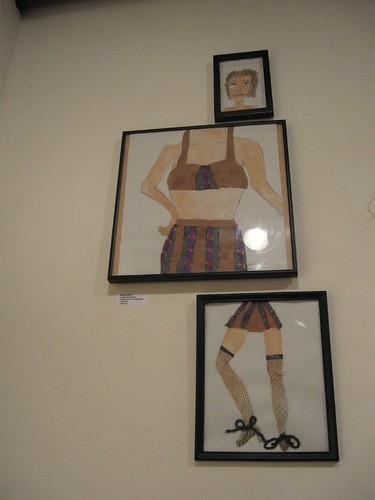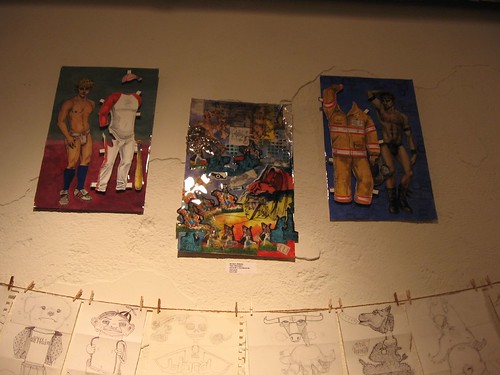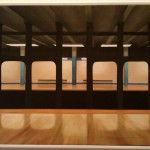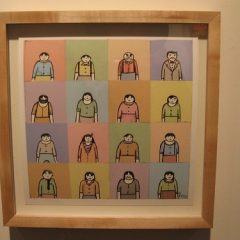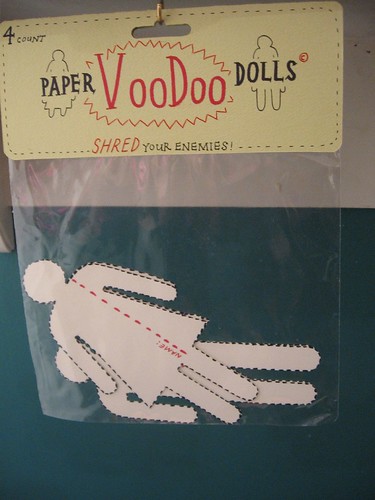
Voodoo paper dolls by Steven Dufala and Joslyn Newman
Sometimes the narratives we tell about ourselves slip out unbidden. I’m thinking here of Barbie and Transformers. Do we really see ourselves as clotheshorses with those strange male-fantasy proportions, sometimes naked, riding poles and ponies in strip clubs advertising girls, girls, girls? Do we really see ourselves as cyborgs that become full-fledged machines (how else to explain the six-pack abs phenomenon)?
I think the answer is, yes, that is how we see ourselves, some of the time.
The dolls made by 15 artists for a show at a clothing store (is that perfect or what?)–Honeymilk at Topstitch Boutique–include a number of stealth narratives, I’m happy to report, and very few of them invoke perfection the way that He-Man and Shira do.
Here are some of the highlights (I can’t remember seeing work by all the people in the artist list, so these are picked from the ones I did see).
The voodoo paper dolls from Steven Dufala and Joslyn Newman tickled my funny bone both for the wifty concept of shredding instead of piercing, and for the transformation of a juju item into a schematic, bland paper doll (sans clothes but not exactly naked, either).
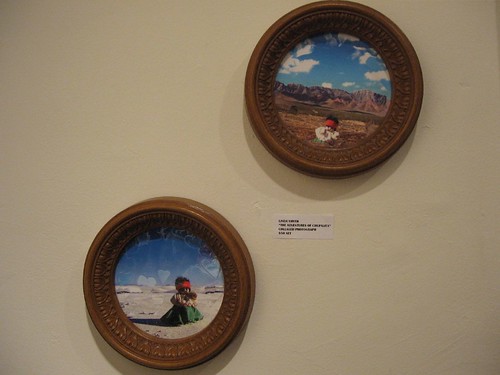
Linda Smyth, The Adventures of Chupalita, collaged photo
This one also came out of left field–Linda Smyth‘s The Adventures of Chupalita, a dumpy little doll in a Mexican get-up out in the middle of the desert. My level of identification in this one is off the charts; I want to rescue her. Smyth also made some nice doll-size knit outfits that I liked a lot.
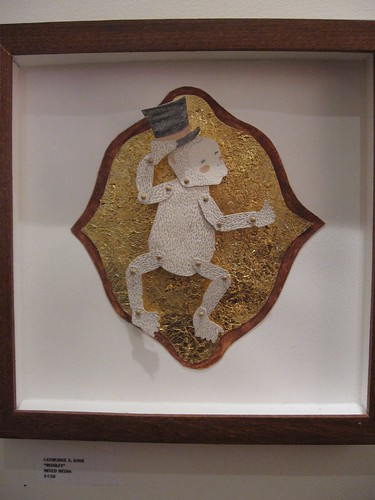
Real monkey sock dolls are displayed right near by Catherine A. Kane‘s performing monkey paper doll with reticulated limbs. Of course, like all dolls, the monkey is us, but it’s not that homey sock doll, but rather a deified creature who feels he has to put on a show. Don’t we all?
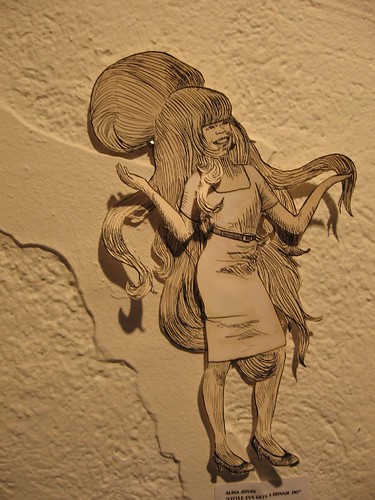
Alina Josan, Little Eva Gets a Ronnie Do
Three paper dolls by Alina Josan mine popular culture, going from city to country to the closet in the tepee, and I loved them all. Besides Little Eva, the others are of a folktale fox in an 18th or 19th century country dress, and an impression of a Plains Native American outfit with moccasins, leggings and fringed tunic– on a hanger. Clothes make the fox.
A pair of triptychs–Unmentionables and Mentionables–by Abigail Bruly amused me for the large scale of the torso versus the small scale for the legs and head, and for the inverted triptych mode of presentation. I also found the awkward, homemade quality of the materials and presentation amusing–a funny contrast to the sexy expectations of unmentionables. Somehow, Bruly succeeds in having it both ways.
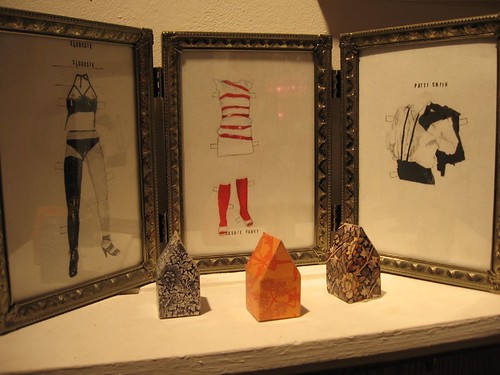
Megan Thomas-Melly, Siouxsie, Debbie, Patti, colored pencil
Speaking of triptychs, Megan Thomas-Melly does a shrine to three girl-rockers–Siouxsie, Debra Harry and Patti Smith–and gives them three little houses to live in. The installation is bookended by two baby dolls (not shown). Making heroes into paper dolls–didn’t I see something like that in the Frida Kahlo show gift shop at the PMA?
Michael Horner gives us another triptych. It’s the two wing pieces that I love best, with the homoerotic muscle guys and their macho guy outfits with the paper doll tabs. I like the gender subversion and the equation to sainthood. The installation was way high over my line of vision and between the darkness and the glare, I couldn’t much make out the center panel.
There was more that I liked, but here’s the last one I’m writing about:
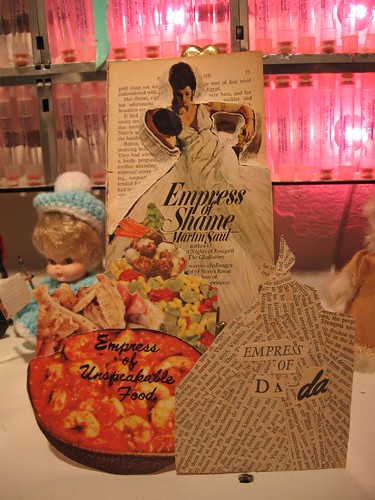
Sue White, The Empress of Shame, altered book
Sue White‘s altered book, The Empress of Shame, confused me a little with its side panels about unspeakable food and da-da (female roles?), but I loved how the isolated figure gets a little depth (something pretty hard to do with a romance book heroine).


